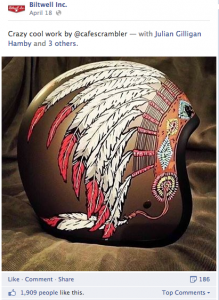Sendible insights How to Maximize Social Media Engagement and Product Promotion
Social media is an integral part of a solid brand development strategy, and it's evolved into a platform for customers to provide feedback and for companies to resolve customer service issues. Social media marketing experts and social behavior researchers are digging into the best ways to create an engaging social media campaign—one that goes beyond the promotional Facebook post and truly caters to the consumer.
Be Willing to Experiment
Originally, British Airways used its social media to engage consumers for reputation management. The prime reason was to solve customer’s problems. Resulting from the experimentation, the airline moved its crisis management approach into a post-crisis brand engagement tactic that includes all stakeholders, which resulted from the experimental use of social media. The first stage of creating a successful social media strategy is to experiment with something that is outside of your comfort zone. If the definition of insanity is doing the same thing and expecting different results, then marketing needs to find sanity in the craziness of communication. In other words, try something different and check the results. At this stage of development, you are creating novel marketing messages and testing them against established goals.
Make Meaning from Chaos
The next stage is to analyze the data, establishing some meaning of the feedback. Order comes from the chaos that is social media monitoring and management software. It is at this stage that the first strategies are developed. Look at the feedback and extract the important stuff. Identify the cool and useful user data from the junk. Do not misunderstand data as only being numeric. Any consumer response to the marketing message is data. In one example, the data was art drawn onto motorcycle helmets. Biltwell, the company that makes motorcycle helmets, took its data and used it to generate interest in the company.
On its company's Facebook page, Biltwell routinely posted cool motorcycle art, which increased user engagement as those who stopped by looked for interesting art. Biltwell took its user response and made itself into a resource for motorcycle art.
Create for the Long Term
The last stage is to formalize your social media strategies and policies. This is where you look into the future of your social media marketing. Studies show that openness to new experiences is one of the biggest influences on the use of social media for decision-making by a consumer. This also is the part where your Twitter and Facebook pages come alive. The Internet security giant LifeLock is using its social media platform to introduce customers to the security team.
Tweets by @LifeLock
At this point, the LifeLock Twitter page is used for consumer knowledge management. It is the first part of a long-term engagement strategy. Looking at the Gen Y demographic, the LifeLock strategy educates the younger generation on Internet safety and will do this for years to come, which will ultimately drive consumer engagement as relationship marketing principles take hold.
Text copied!



